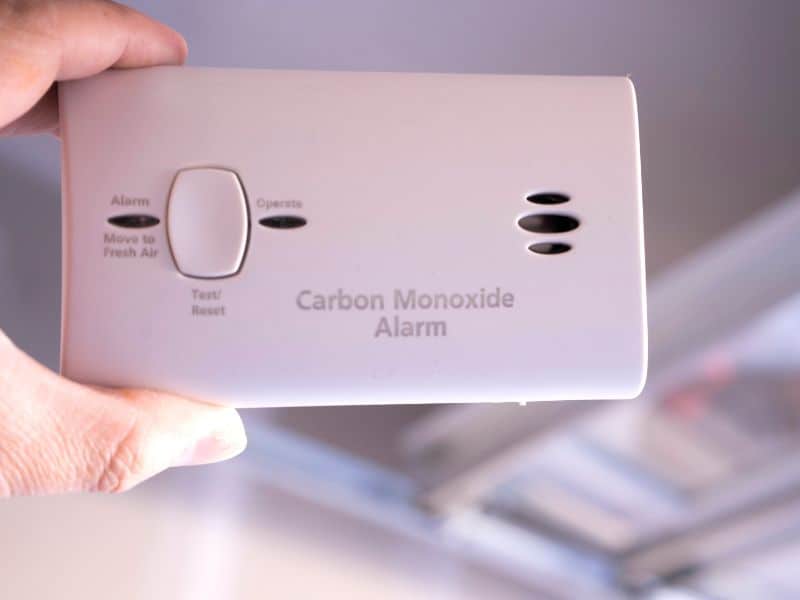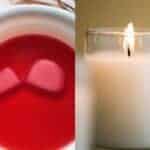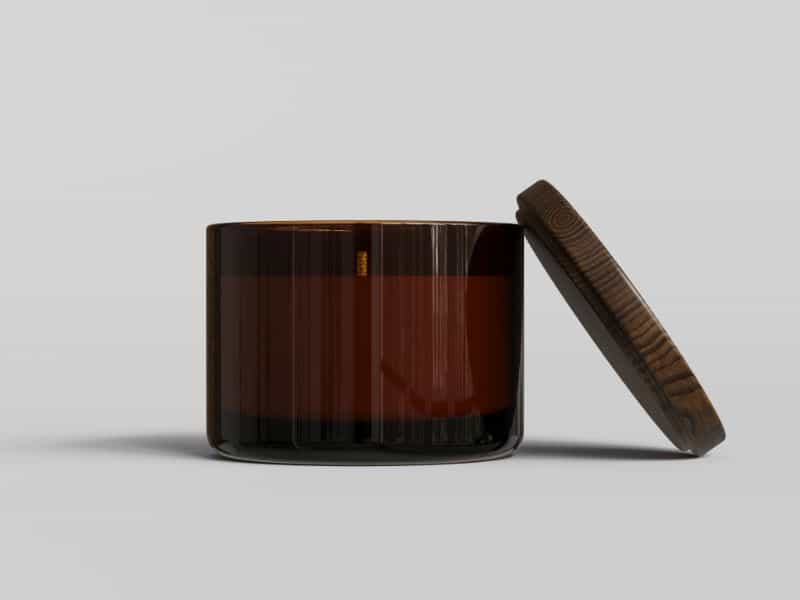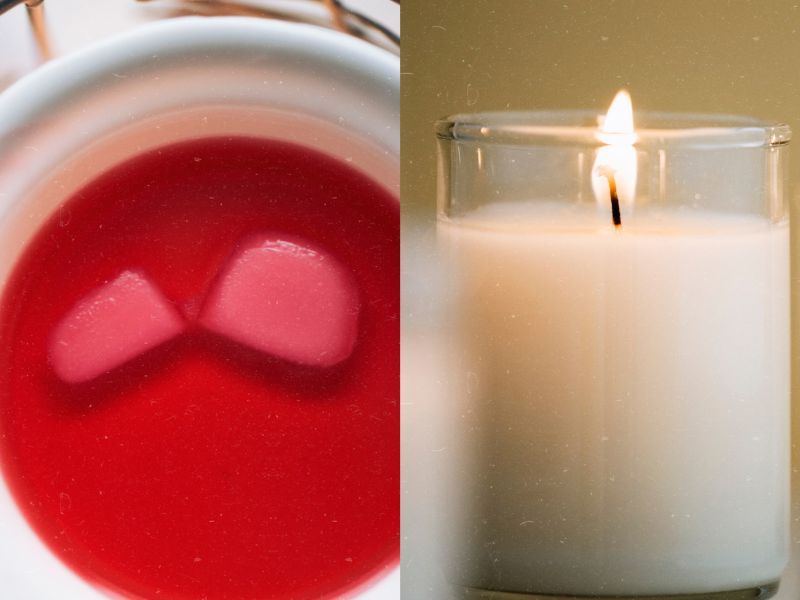The topic of carbon monoxide detection, specifically, the unlikely agent of a burning candle setting off a carbon monoxide detector, may not be an everyday concern for most people.
However, the importance of understanding the function and limitations of these essential safety devices – the smoke detector and carbon monoxide alarm – cannot be overstated. They are our silent guardians, monitoring our indoor environment for potential threats to our well-being.
Can a Candle Set Off a Carbon Monoxide Detector?
A single candle won’t produce enough carbon monoxide to trigger a detector. However, numerous candles burning simultaneously in a poorly ventilated space may produce enough CO to potentially set off the alarm.
Diving deeper into the chemistry, when a candle burns, a chemical reaction occurs which produces carbon monoxide gas, among other byproducts. However, the amount of carbon monoxide a single candle produces is typically minimal and unlikely to reach alarm-triggering levels.
Yet, the popular belief, fueled perhaps by an understandable caution around any potential CO source, tends to overestimate the risk posed by candles.
Nevertheless, it’s worth noting that the number of candles in use does affect the CO levels. A room filled with burning candles, especially with poor ventilation, could theoretically produce enough carbon monoxide to set off the alarm.
Can Candles Cause Carbon Monoxide Poisoning?
Candles can produce carbon monoxide, but typically not in quantities significant enough to cause poisoning. However, in a poorly ventilated space with a large number of burning candles, there may be a risk of elevated CO levels.
When considering potential sources of CO, candles, particularly paraffin candles, often go unnoticed. Interestingly, these candles produce more carbon monoxide compared to their soy wax counterparts.
While the amount of CO produced by a single candle may seem insignificant, the cumulative effect of a candle set – multiple candles burning simultaneously – can increase CO levels in a room.
Additionally, scented candles, popular for their ability to create a pleasing ambiance, could exacerbate the situation due to additional chemicals. Therefore, it’s advisable to burn candles in a well-ventilated room to facilitate the dissipation of any gases produced.
Understanding Carbon Monoxide (CO)
Carbon monoxide (CO) has earned an ominous nickname – the ‘silent killer’.
This is due to the stealthy and dangerous nature of CO. This invisible, tasteless, and odorless gas can, without warning, cause carbon monoxide poisoning, presenting symptoms that may be easily mistaken for common flu-like symptoms such as headaches, dizziness, and nausea.
The dangerous levels of carbon monoxide, however, are not just an inconvenience; they are potentially fatal. As such, the role of CO detectors and CO alarms in our homes is paramount.
These devices serve as our first line of defense against this silent killer, sounding an alarm when the level of carbon monoxide rises beyond the safety limit.
Carbon Monoxide Sources in the Home
Within our homes, numerous sources contribute to CO production. Among these, fuel-burning appliances stand out as the most common.
Water heaters, gas stoves, and gas appliances, if improperly ventilated or malfunctioning, can generate dangerous levels of carbon monoxide gas.
Another potential threat comes from power outages, which might encourage the use of generators or heaters inside the home without adequate ventilation, escalating the risk of CO poisoning.
False Alarms and Carbon Monoxide Detectors
False alarms in CO detectors and smoke alarms are not uncommon, often causing undue panic. In some instances, carbon dioxide – a different but related gas – can play a role in these false alarms.
As we breathe out carbon dioxide, high levels may accumulate in confined, poorly ventilated spaces, potentially interfering with the sensors in some CO detectors.
The National Fire Protection Association offers helpful guidelines to differentiate false alarms from real ones, reinforcing the importance of understanding the functionality and nuances of our safety devices.
Safety Measures and Precautions
Adding to the roster of safety devices, having a fire alarm and smoke detector installed is always a good idea. These devices add layers of protection against potential threats.
Fresh air and ventilation also play a critical role in maintaining a healthy indoor environment, effectively diluting high levels of carbon monoxide and other pollutants.
Moreover, for fire safety, the importance of sprinkler heads cannot be ignored. In the event of detecting a high level of carbon monoxide, immediately evacuate all family members to a fresh air location, away from the source of CO.
When to Call the Fire Department
Being able to recognize when CO reaches dangerous levels is crucial. Under such circumstances, it is essential to alert the fire department without delay. Their expertise and equipment are needed to mitigate the situation.
During such an emergency, ensuring the swift evacuation of all family members to fresh air is of utmost importance.
Heightened Risk of CO Exposure in Special Circumstances
There are certain situations and environments that could inadvertently heighten the risk of carbon monoxide (CO) exposure.
Increased Use of Heating Appliances
During the cold winter months, our reliance on heating appliances significantly increases. If these appliances are faulty or improperly ventilated, the rise in usage can lead to a dangerous increase in CO levels.
CO Exposure Risks in Hotel Rooms
Hotel rooms can present unique challenges. Despite being designed for comfort, they may lack adequate ventilation and the heating appliances might not be as well-maintained as those in a personal residence.
Consequently, this can create an increased risk for CO exposure.
Responding to Night-time CO Alarms
A particularly tricky situation arises when a CO alarm is activated during sleep. It’s tempting to dismiss the alarm, especially when groggy from sleep.
However, it’s essential to evacuate immediately upon hearing the alarm, regardless of the time, and to seek professional assistance to assess the situation.
The Silent Killer: Odorless and Tasteless CO
One critical factor to remember is the nature of carbon monoxide itself. This gas is both odorless and tasteless, rendering our human senses ineffective in detecting it.
Therefore, it’s crucial to take any sounding CO alarm seriously, as it is likely the only warning sign of an imminent, potentially fatal hazard.
Understanding Carbon Monoxide Myths and Misunderstandings
Let’s clear up some myths about carbon monoxide.
These myths can confuse people, and lead them to make wrong decisions that can be harmful. We’ll look at two of the most common ones:
Myth 1: Carbon Monoxide is Heavier than Air, So You Need to Put Detectors Close to the Ground
A lot of people think that carbon monoxide is heavier than air and will sink to the ground. That’s not true. Carbon monoxide actually mixes up evenly in the air, just like oxygen does.
The best place to install carbon monoxide detectors is not low to the ground, but at the height of your knee when you are sleeping, or where the detector’s instructions tell you to put it. That way, it can alert you even if you’re asleep.
Myth 2: If There’s No Gas Smell, There’s No Carbon Monoxide
This idea can be very dangerous. Carbon monoxide is called a “silent killer” because it’s a gas that you can’t see, smell, or taste. Even if your gas stove or heater isn’t giving off a smell, it can still produce carbon monoxide.
That’s why it’s so important to have a working carbon monoxide detector. This tool can pick up on carbon monoxide in your home, even when you can’t.
Knowing the truth about carbon monoxide can help you stay safe. When you understand what this gas is and what it can do, you can take the right steps to protect yourself and your family from the dangers of carbon monoxide poisoning.
Frequently Asked Questions
If a carbon monoxide detector goes off, it’s important to immediately evacuate the premises and move to fresh air. Once safe, call the local fire department or a professional to assess the situation.
The National Fire Protection Association recommends replacing carbon monoxide detectors every five to seven years, but this can vary depending on the manufacturer’s instructions.
Proper ventilation can help dissipate any carbon monoxide that might be produced, preventing it from building up to dangerous levels in confined spaces.
During the winter months, people tend to use heating appliances more frequently, which can potentially emit carbon monoxide, especially if these appliances are faulty or the ventilation is inadequate.
When staying in a hotel, check for the presence of a functional CO detector in the room. If an alarm sounds, evacuate promptly and alert the hotel management or call the fire department.
Conclusion
In conclusion, awareness of carbon monoxide, its sources, and the essential role of CO detectors and alarms in safeguarding our homes is paramount. When we ponder the question, “Can a candle set off a carbon monoxide detector?”, the answer isn’t as straightforward as we might expect.
While it’s true that a single candle or even a small group of candles is unlikely to produce enough CO to trigger an alarm, a large number of candles burning in a confined, poorly ventilated space might just tip the balance.
Therefore, while the risk is minimal, it does exist and should be considered, especially in settings where candles are used extensively. Stay safe, stay aware.






